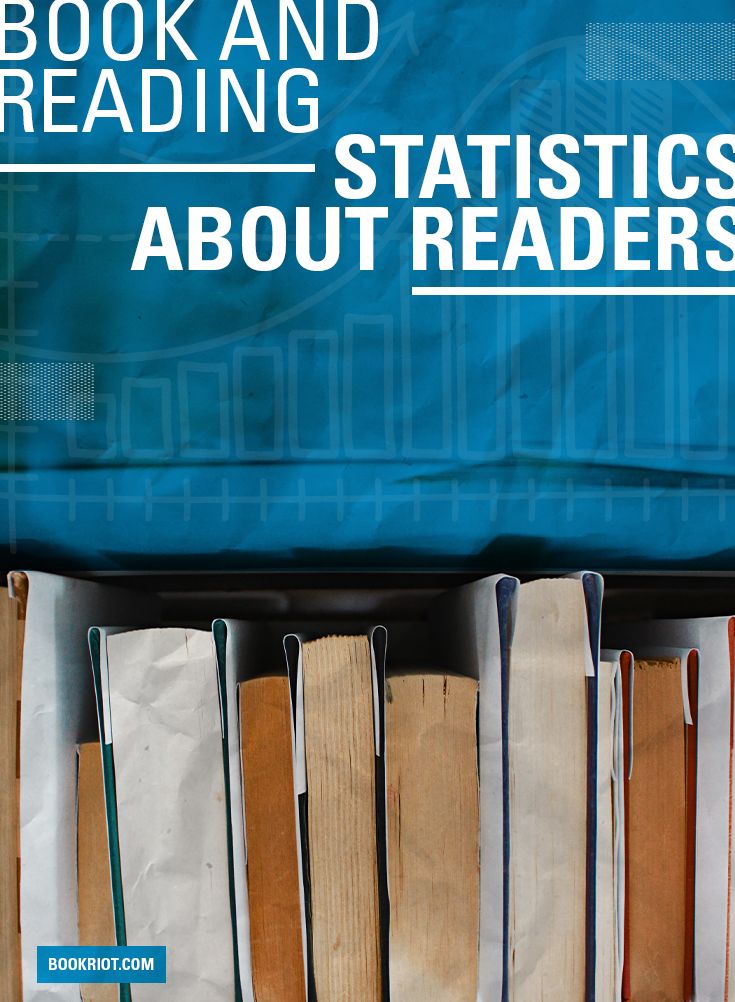
These Are The Book and Reading Statistics That Show Who Readers Are
Have you ever wondered how much time the average person in the U.S. spends reading? How about how we stack up against readers in other countries? Read on for a collection of books and reading statistics—with links for further reading, of course!
Reading Statistics in the U.S.
In 2017, people in the U.S. 15 years and older spent an average of 16.8 minutes a day reading (not including for work or school), according to a survey by the Bureau of Labor Statistics. This is down from 22.8 minutes in 2005.
Women read more than men, 19.8 minutes per day compared to 13.2, with men’s reading time declining more quickly than that of women. Those in the U.S. aged 20–34 read the least, with an average of 6.6 minutes per day, with teenagers reading 1.8 minutes more. Those 75 and older read the most, with an average of 51 minutes per day.
While 24% of U.S. adults surveyed in 2018 hadn’t read even part of book in the past year, the Pew Reseach Center investigated which ones were the most and least likely to pick up a book. The richest adults are three times more likely to read than those with a household income lower than $30k. College graduates are more than five times more likely to pick up a book than those with a high school diploma or no diploma. Suburban dwellers are slightly more likely to read than those who live in the city, who are a little more inclined to read than rural residents.
According to the Bureau of Labor Statistics’ 2016 Consumer Expenditure Survey, the average U.S. household spends $118 on reading annually. This includes newspapers and magazines.
Market Trends For Book Statistics
When it comes to book statistics, adult nonfiction showed the largest growth with a 5.4% revenue increase from 2016 to 2017, according to the StatShot Annual Report from the Association of American Publishers. Adult fiction showed a decrease of 1.2% in the same time, while sales of young adult books rose 4.4%. Audiobooks are the fastest growing format, with a massive 28.8% growth from 2016 to 2017.
Speaking of audiobook trends, younger people seem to be driving this market. 48% of listeners are under the age of 35 and 29% of listeners are using their smartphone to play the books. 57% of audiobook consumption occurs at home while 32% happens in the car.
International Reading Statistics Comparisons
How do people in the U.S. stack up against the rest of the world in terms of time spent reading? We’re definitely not the first, but surely top 5, right? Nope. Top 10? Guess again.
According to the NOP World Culture Score Index, we are tied for 22nd place with Germany. Which country claims the most reading per person? That would be India with almost 11 hours per week, with Thailand at a distant second and the rest of the field falling quickly behind.
This 2016 survey from the International Publishers Association and the World Intellectual Property Organization has a lot of interesting data from publishing markets around the globe. I found it interesting that only 18% of China’s massive book market consisted of retail sales, while the same segment accounted for 78% of Norway’s titles.
Different countries have embraced ebooks to varying degrees. China leads the way with 28% of their retail sector being ebooks. In comparison, the U.S. and Japan retail market is about 18% electronic, while France’s is a mere 2.2%.
Reading Statistics In Kids
A study of K-12 student reading habits demonstrated that six extra minutes of reading per day can turn a struggling reader into one who meets or surpasses their grade’s benchmark.
Those students who read 15 minutes or more per day—about 46% of students—made accelerated reading gains.
How important is this? Third grade students who are “proficient” in reading are almost five times more likely to graduate high school than their peers with “below-basic” reading skills. 82% of sixth graders who fail an English class don’t graduate high school
62% of children (ages 6–17) in a 2016 survey by Scholastic said they enjoy reading books over the summer. The kids surveyed read eight books over the summer on average, but 20% of kids in lower-income families didn’t read a single book over the summer. Households with an income of $100,000 or more had almost twice the number of books in the home compared to households with an income of $35,000 or less.
Compared to primetime TV, children’s books expose kids to 50% more words than primetime TV, according to a paper from the University of California, Berkeley.
Books & Aging
Book readers were shown to have a 20% “reduction in risk of mortality” over 12 years, compared to non–book readers in a 2016 study. This advantage was significantly greater than for those who only read newspapers or magazines.
A 2001 study showed that people who participate in mental activities like reading, puzzles, or chess might be 2.5 times less likely to develop Alzheimer’s disease than those who don’t engage in as much mental stimulation.
A 2013 study showed that both “early-life cognitive activity” (such as reading) and “late-life cognitive activity” reduced cognitive decline by 14%.
Read More, Feel Better
I feel like I’m preaching to the choir, telling this site’s readers how good reading is for you. We’ve already talked about the ways reading makes you smarter, but does it make you happier?
Adults who read for 30 minutes a week reported feeling 20% more satisfied with their lives in the latest Quick Reads study. 40% of people in that same study claimed “lack of time” was the main reason they didn’t read, but the first study quoted in this article shows us that people in the U.S. spend 10 times more time watching TV than reading.
One study showed reading reduces stress by 68 percent, more so than listening to music, having a cup of tea, or taking a walk.
So if you’re feeling stressed or dissatisfied, consider putting down the remote and picking up a book instead.
As a book nerd whose second language is Excel, I loved compiling these reading statistics, but my favorite thing about it was seeing the CEO of the UK’s Publishing Association attribute a noticeable dip in children’s book sales to the lack of a Harry Potter release that year.
Do you have any interesting book or reading statistics I missed?

















